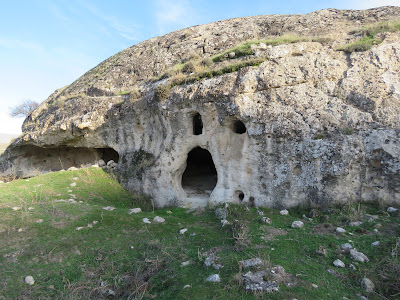Statement by Hasankeyf Matters and the Initiative to Keep Hasankeyf Alive
In years past, the ancient city of Hasankeyf attracted hundreds of thousands of visitors annually, offering them the chance to explore the traces of more than 20 civilizations that contributed to the city’s cultural heritage. With a history spanning 12,000 years, Hasankeyf held a special appeal to visitors from the surrounding region as well as to those from western Turkey, and every corner of the globe. These visitors enabled local residents to provide for their families while also sharing their specialized knowledge of this historic landscape.
Today, with the completion of the Ilısu Dam and the creation of a huge reservoir covering the old town, conditions in Hasankeyf have deteriorated severely: Local residents face both an immediate crisis of unemployment, and very likely significantly diminished income for years to come. As for the city’s unparalleled cultural heritage, vast tracts of land – holding archaeological and architectural remains of inestimable value – lie unprotected beneath the reservoir. After only a few months of submersion, it is possible to observe significant deterioration in the condition of Hasankeyf’s cultural heritage.
In recent weeks, for example, it appears that erosion has uncovered what may be human remains near the cave church at the base of Ra’s Kayım, a site at the eastern edge of Hasankeyf’s lower city that figures in local oral historical accounts of the massacres of 1915.
The remains of villas, madrasahs and cemeteries in Hasankeyf’s Salihiyye Gardens are also showing signs of rapid deterioration. These remains constitute the best-preserved examples of the medieval garden districts typical of Seljuk cities across Anatolia and Persia. Unfortunately, this treasure of Islamic civilization will be lost forever unless urgent action is taken to save it.
The seepage of water through the rock-and-concrete barrier surrounding Hasankeyf’s Citadel is also a matter of the utmost concern. In late spring, this seepage led to the flooding of the historic monument known as the Küçük Saray (Small Palace) at the northeast corner of the Citadel, raising concern that water may also be seeping into the solid limestone mount upon which the Citadel itself is built. The leaking barrier was built at great expense and has severely marred the appearance of the Citadel. Its failure, placing parts of the Citadel at risk of collapse – just as critics of the Ilısu Dam project had feared – is unacceptable. So too is the long closure of the new Hasankeyf Museum due to significant leaks in its roof. The dismantling of Hasankeyf’s tourism-based economy is also unacceptable.
The government has never released a substantive and convincing plan for transforming Hasankeyf, post-Ilısu, into a world-class tourist destination. And the evidence is mounting day-by-day that Hasankeyf and its residents will struggle for a long time simply to regain the level of commercial activity enjoyed before the destruction of the historic city.
In light of the deteriorating physical and economic conditions described above, we demand that the Government of Turkey take immediate and urgent steps to halt the damage to, and destruction of, the cultural heritage of Hasankeyf and surrounding areas. There are many ways to generate electricity, but the only way to achieve sustainable and diversified growth in Hasankeyf is by allowing the Tigris River to flow freely and restore the equilibrium of the natural ecosystem.
Specifically, we call on the Government to:
- Establish an independent, interdisciplinary commission of engineers, architects, cultural heritage conservation professionals, and other experts to evaluate – and report to the public about – the situation at Hasankeyf, including the ongoing threats to the Small Palace and Citadel, as well as progress on repairing/reopening the Hasankeyf Museum.
- Establish an independent, interdisciplinary commission, including sociologists, engineers, architects, and housing and urban-planning experts, to ensure that problems in the new settlement area of Hasankeyf are resolved promptly. These include problems with the new housing units, drinking water, and poor drainage during heavy rains.
- Ensure that all residents forcibly displaced during the implementation of the Ilısu Dam project are provided with access to adequate affordable housing as close as possible to the location of their original homes, regardless of gender, family status, wealth, employment status, or property ownership. All affected people must be compensated according to international law.
- Drain the Ilısu Dam reservoir, let the river run free, allow the natural ecosystem to regain its balance, and continue the excavation, documentation, and conservation of the invaluable archaeological and architectural treasure hidden in the soil of Hasankeyf and the surrounding area.
- Document the intangible cultural heritage of the local residents of Hasankeyf and the nearly 200 villages within the flooded area.
- Develop systematic mechanisms to include a broad cross-section of stakeholders in a rigorous, consensus-based program to design, implement, and manage a plan for environmentally and socially sustainable development in Hasankeyf and the Upper Tigris basin. Such a plan must preserve the beauty and value of the natural ecosystem for the social, cultural, scientific, and economic benefit of future generations.
While the Ilısu hydroelectric power plant is designed to produce approximately 4000 GWh of electricity each year (roughly one percent of Turkey’s total annual electricity consumption), there is little question that the cumulative potential cultural, social, educational, and economic benefits to be derived from protecting the cultural heritage of this historic landscape far exceed the anticipated economic impact of the dam project.
Hasankeyf is one the world’s most valuable archaeological sites. If the reservoir is drained and the natural ecosystem restored, the majestic landscape of Hasankeyf and the Upper Tigris basin could become the anchor for a regional tourism industry based on nature and culture that is both environmentally sustainable and economically profitable.
For more information:
Notes:





No comments:
Post a Comment